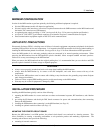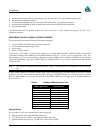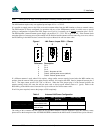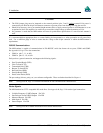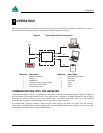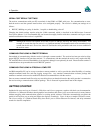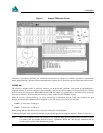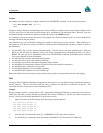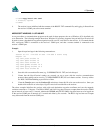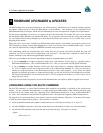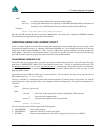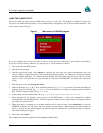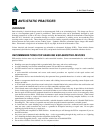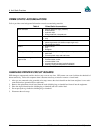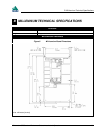
4 Operation
26 MiLLennium GPSCard and Enclosures Guide to Installation & Operation
Example:
An example of no echo response to an input command is the FIX HEIGHT command. It can be entered as follows:
COM2>fix height 550 [Return]
COM2>
The above example illustrates command input to the receiver COM1 port which sets the receiver antenna height as fixed
to 550 m above sea level and causes position solutions to be constrained as 2D with height fixed. However, your only
confirmation that the command was actually accepted is the return of the COM2> prompt.
If a command is incorrectly entered, the receiver will respond with “Invalid Command Name” (or a more detailed error
message) followed by the port prompt.
After initial boot up, you may find the following logs useful for observing the receiver activities. While GPSolution is
the easiest way to do this, you can also use DOS or a Windows-based communications program; examples of both are
provided below.
•
Use the RCCA log to list the default command settings. After the receiver has been operational for a while, the
RCCA log will be useful for indicating status of all current command settings. Displaying the RCCA log after a
RESET will show the saved configuration (refer to the SAVECONFIG command in the MiLLennium Command
Descriptions Manual for more information).
•
Use the ETSA log to monitor the channel tracking status.
•
Use the SATA log to observe the satellite specific data.
•
Use the POSA log to observe the current computed position solutions.
•
Use the DOPA log to monitor the dilution of precision of the current satellite constellation.
•
Use the RVSA log to monitor the receiver status.
•
Use the HELP command to list all available commands.
•
Use the HELP LOG command to list all available logs.
Refer to the MiLLennium Command Descriptions Manual for procedures and explanations related to data logging.
DOS
One way to initiate multiple commands and logging from the receiver is to create DOS boot-up command files relating to
specific functions. This will save time when you want to duplicate test situations and minimize set-up time. Any
convenient text editor can be used to create command text files.
Example:
For this example, consider a situation where a PC’s appropriately-configured COM1 port is connected to the receiver’s
COM1 port, and where a remote terminal is connected to the receiver’s COM2 port. The PC user wishes to monitor the
receiver’s activity; the following command file could be used to do this.
1. Open a text editor on the PC and type in the following command sequences:
log com2 sata ontime 15
log com2 etsa ontime 15
log com2 rvsa ontime 60 5
log com2 posa ontime 15
log com2 dopa ontime 15
2. Save this with a convenient file name (e.g. C:\GPS\BOOT1.TXT) and exit the text editor.
3. Use the DOS copy command to direct the contents of the BOOT1.TXT file to the PC’s COM1 port:




